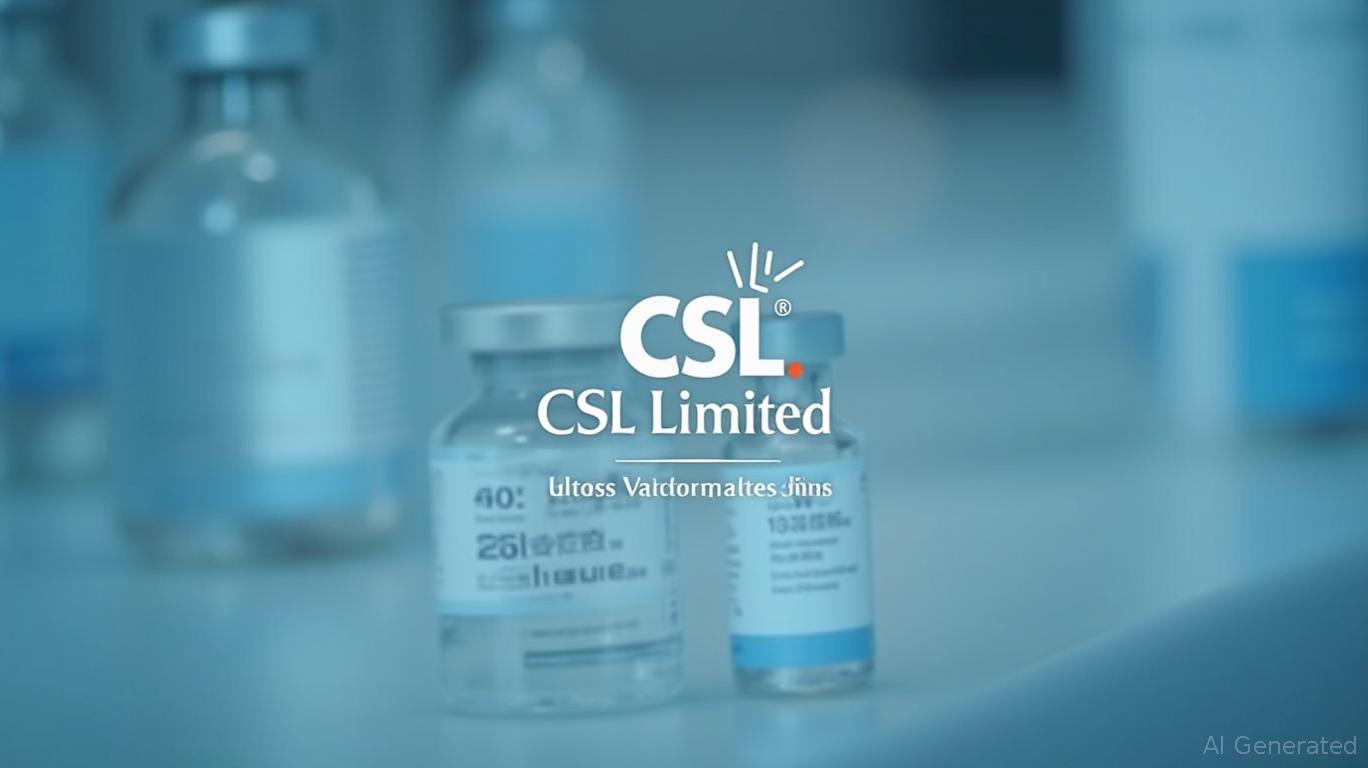CSL Limited: Bridging the Gap Between DCF Optimism and Analyst Pragmatism
The question of whether CSL Limited (ASX:CSL) is undervalued hinges on reconciling two starkly different narratives: a discounted cash flow (DCF) model that suggests a 39% upside and a more conservative analyst consensus targeting a 29.9% gain. This divergence reveals a company at a crossroads—its financial health and R&D prowess position it as a biotech leader, yet risks tied to debt and growth constraints temper optimism. Let's dissect the metrics, risks, and catalysts to determine where CSL stands in its valuation journey.

DCF Optimism: A High-Beta, High-Reward Scenario
The DCF analysis paints a bullish picture, valuing CSL at AU$391—nearly double its current price of AU$239.29. This projection relies on a 6.5% cost of equity and a 2.9% terminal growth rate, assumptions that reflect confidence in CSL's ability to sustain its current trajectory. The terminal value, contributing US$90 billion to the total equity value of US$122 billion, underscores the model's optimism about long-term stability.
But here's the catch: The terminal growth rate is a critical lever. A mere 0.5% reduction in assumed growth could shrink the fair value by over 10%, highlighting sensitivity to macroeconomic shifts or competitive pressures. For investors, this is a reminder that DCF models are as much art as science.
Analyst Pragmatism: Grounded in Growth and Debt Realities
Analysts, by contrast, anchor their AU$310.87 consensus target to near-term concerns. Key factors include:
- Slowing Revenue Growth: Forecasts suggest CSL's annual revenue growth will remain below 20%, a pace that lags its biotech peers.
- Debt Leverage: Despite manageable ratios (Debt/Equity = 0.58), the net cash position is negative (-AU$16.87 billion), a red flag in a rising-rate environment.
- Dividend Underperformance: The 1.67% yield trails top biotechs, signaling limited shareholder returns beyond capital appreciation.
Even bulls like Macquarie, which raised its target to AU$360.30, acknowledge risks. Their optimism hinges on CSL's R&D pipeline—particularly its influenza vaccines and non-plasma therapies—which could unlock new revenue streams.
Valuation Ratios: A Mixed Scorecard
- PE and PEG: The trailing PE of 26.09 and PEG of 1.71 suggest CSL is priced for above-average growth, but not excessively so.
- EV/EBITDA and FCF Multiples: At 17.03 and 38.13, respectively, these metrics signal a premium valuation relative to cash flow. The latter, in particular, raises eyebrows—investors are paying 38 times free cash flow for a company with no net cash buffer.
Strengths and Weaknesses: The Case for Caution and Hope
Strengths:
- CSL's ROE of 14.35% and 18.04% net profit margin reflect robust earnings quality.
- Its diversified revenue streams (50% North America, 25% Europe) reduce geographic risk.
- The Seqirus influenza vaccines and plasma-derived therapies dominate niche markets, ensuring recurring demand.
Weaknesses:
- The negative net cash position creates vulnerability to rising interest rates.
- Earnings growth has underperformed the broader biotech sector in recent years, and dividend yield remains uncompetitive.
Technicals: A Stock in Decline, but Not Yet Broken
The stock has fallen 18.77% over 12 months, trading below its 200-day moving average (AU$268.28). Its beta of 0.35 suggests lower volatility than the market, but this stability may mask underlying investor skepticism. A sustained breach below AU$230 could trigger further declines, while a rebound above AU$270 might signal renewed confidence.
Investment Thesis: A Balanced Approach
Buy Signal:
- Upside Catalysts: Positive R&D updates (e.g., pipeline progress in non-plasma therapies), outperformance in Q3 earnings (August 2025), or a strategic debt-reduction plan could push shares toward the AU$360 target. Historically, when CSL has beaten earnings estimates, a buy-and-hold strategy for 20 days has delivered an average annualized return of 3.09% since 2020, though investors should note a maximum drawdown of 31.48% and a Sharpe ratio of 0.20, indicating low risk-adjusted performance. This underscores the potential upside but also the volatility risk associated with earnings-driven moves.
- Valuation Anchor: The DCF's AU$391 represents a best-case scenario, but even a halfway valuation (e.g., AU$310) justifies a 29.9% gain from current levels.
Hold/Sell Signal:
- Downside Triggers: Missed earnings forecasts, rising debt costs, or a slowdown in R&D milestones could pressure shares toward AU$200. The EV/FCF ratio of 38.13 leaves little margin for error.
Final Take: A Value Play with Strings Attached
CSL is a convexity play—a stock that rewards investors if its R&D bets pay off and risks penalizing them if debt or growth concerns materialize. The AU$310 consensus target strikes a reasonable balance between optimism and caution. Investors should:
1. Monitor Q3 earnings (August 2025) for clues on revenue trends and cost management.
2. Watch for updates on Seqirus's pipeline and non-plasma product expansion.
3. Assess debt refinancing plans in light of rising rates.
Recommendation: Consider a gradual accumulation strategy, buying into dips below AU$250 while maintaining a stop-loss below AU$220. For long-term investors, CSL's stable cash flows and R&D moat justify a position, but it's not a "set-it-and-forget-it" stock—active management is key.
In the end, CSL's valuation debate isn't about being right or wrong but about weighing the probabilities of its R&D success against the risks of its debt-laden balance sheet. The answer, as always, lies in the details.

Comments
No comments yet